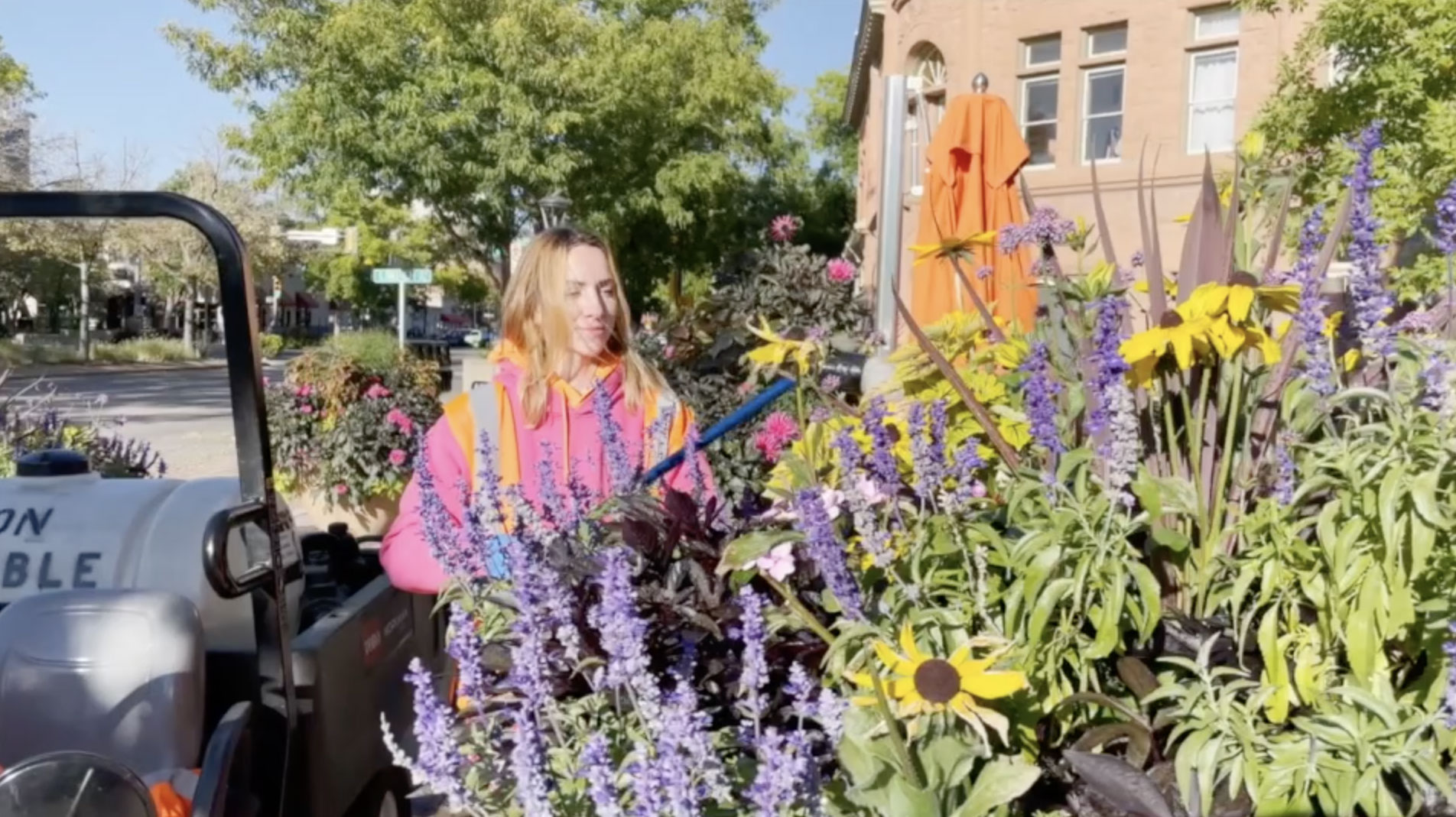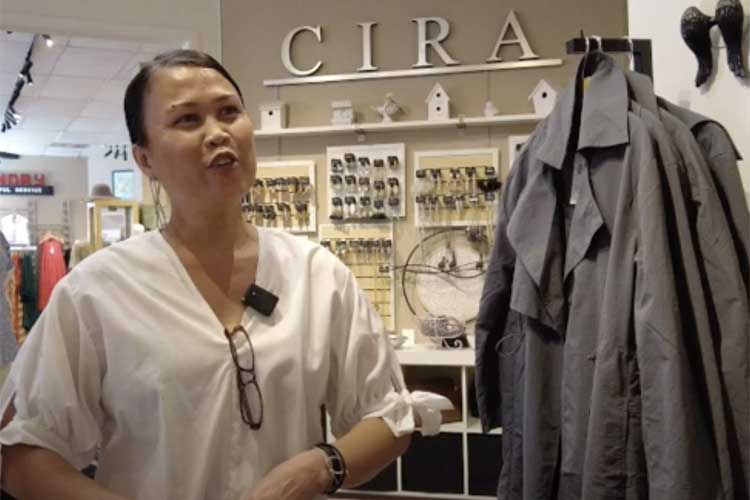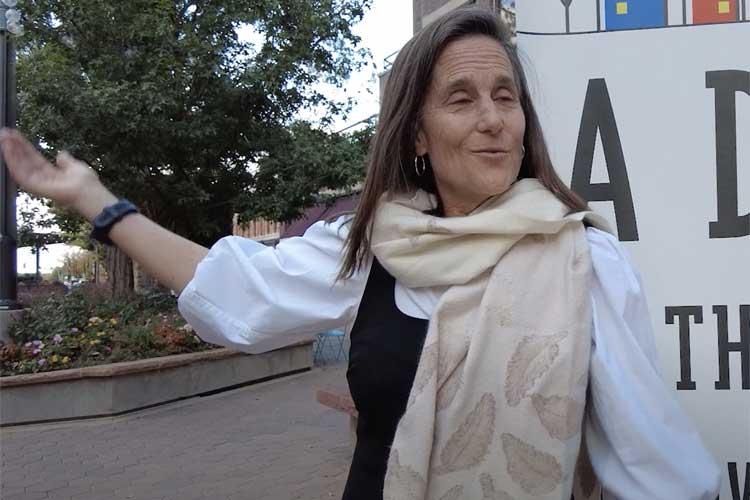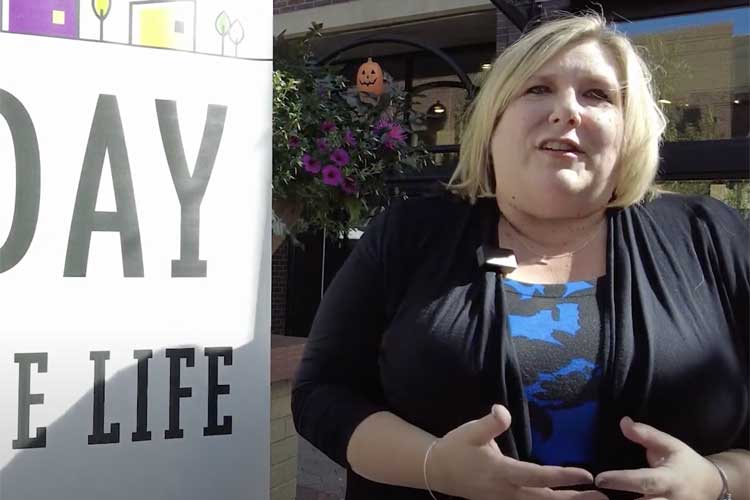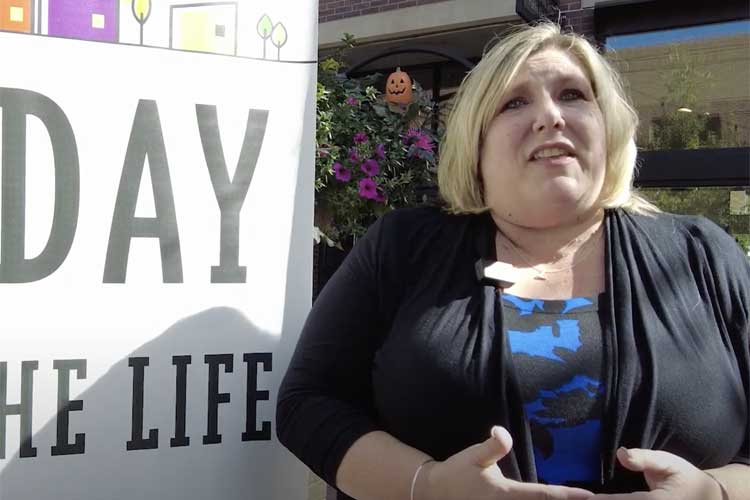GREELEY — Downtown Greeley has plenty of greenery, given that the city is an official Tree City USA, but it also has dozens of metal, stone and ceramic trees complementing the other sculptures and murals there.
“The styles go anywhere from semi-realistic to totally abstract,” said Kim Snyder, public art coordinator of Culture, Parks and Recreation and Public Art for the city of Greeley. “There are different colors, some rusted metal, some pink, white and blue bunnies. Some of them are very witty with the titles, and it reflects what the tree is.”
The Uptown Trees are part of the Greeley Public Art Program started in 1993, an effort by the city and its partners to bring art to the city’s parks, streets and downtown through One Percent for Art. That program sets aside 1% of the cost of new public capital improvement projects to acquire, maintain and commission art.
Public Art initially served as a way for the city to judge and accept donated art and now consists of 350 works of rotating indoor and more than 160 pieces of outdoor art.
“The art grows with the city. People don’t pay for art when times are hard,” Snyder said.
Snyder came up with the idea for the Uptown Trees program when she visited San Diego and saw that the public art commission there placed Urban Trees in planters along the bay. With the commission’s permission, the city named its program Uptown Trees, launching it in 2014.
The city commissioned 10 regional artists to design and create sculptural trees, which were installed in 2014, but now places five to eight trees a year most years, with three trees being added this year.
One of the sculptural trees is “Bird Watching” by Colette Pitcher of Greeley, owner of the Showcase Art Center and a sculptor, painter and author. The tree is a pyramid shape with steel birds on it that represent Northern Colorado bird species and, at the planter base, a bronze cat gazing up at the birds.
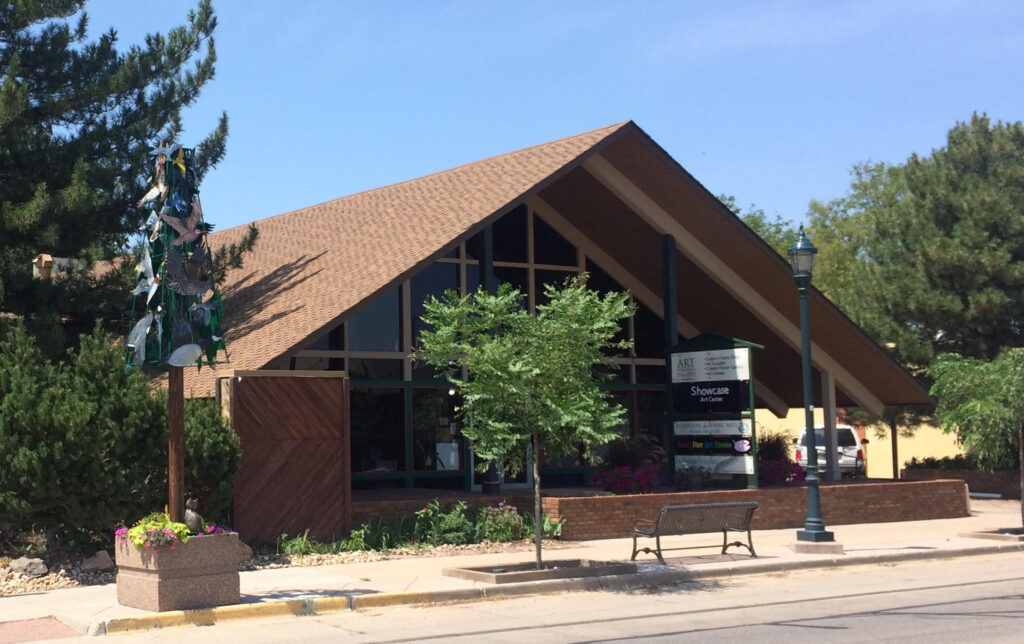
“People drive that area to see the trees. It’s an attraction,” Pitcher said. “It beautifies the city. It gives people something to think about. It challenges our minds and it educates. Besides that, it looks really nice.”
So far, the city installed 31 sculptural trees from 10th to 17th streets along Eighth Avenue with the support of the Greeley Downtown Development Authority; the DDA also purchased the planters for the trees, plus plants flowers every spring. The three trees that will be added this fall include two on Eighth Avenue and the third at the new LINC, Library Innovation Center, at 501 Eighth Ave.
The sculpted trees are required to be 10 to 20 feet high, be able to withstand Colorado’s weather conditions and consist primarily of metal, but also of stone, ceramics and heavy-duty plastic. The majority of the trees were put in place when Eighth Avenue was under construction, and now placements are coordinated with new construction projects or if an existing tree sculpture needs to be replaced due to wear and tear.
Initially, the city paid $10,000 per sculptured tree to cover artist and material costs but has since raised that amount to $15,000 due to inflation. At first, the artists were regional, but now the call is nationwide through CaFÉ, a call for artist entries.
“It’s rather low-budget to allow new artists to get their foot in the door,” Snyder said. “With the lower budget, we don’t intend for them to last for 10 years.”
The city also has a Sculpture on Loan Program that as of this year will conclude with permanent art downtown. The art loan program was launched in 1998 to place art on pedestals in the city’s parks on a rotating basis, created by regional and now national artists. The program was relocated to downtown in collaboration with the DDA 10 to 12 years ago when the parks began obtaining more pieces of permanent art as part of the city’s outdoor collection.
“The Sculpture on Loan Program is the most affordable way to start … it gives you a lot of different pieces for a small amount of money,” Snyder said.
The downtown art is displayed on 10 pedestals and initially was rotated every year, but over the past five years, one to two pieces started becoming part of a permanent collection. The last piece was purchased in January.
“The DDA may approve the work to see if it meets the image it wants downtown,” Snyder said.
The city has a 12-member Greeley Art Commission board, consisting of DDA members and other stakeholders, that oversees the Public Art Program and approves the art that the city borrows or purchases.
The DDA provides additional art for the city through the Downtown Greeley Art Alley program that turned the alley between the Eighth and Ninth street historic plazas into an inviting, pleasant space. Previously, the alley was unappealing and unsafe, with dumpsters and poor lighting, but with murals and festoon lights has been reclaimed into a destination.
The Art Alley program, which was launched in 2014, consists of 13 murals along the backs of businesses in different mediums and styles from abstract to realism. The art follows the theme of music, since live music is provided downtown, and is created primarily by local artists.
“Art and lighting changed the nature of the space,” said Bianca Fisher, executive director of the DDA. “What it creates is an intentional art gallery. … It’s still a functional alley with dumpsters and smells. This element of art and beauty created a destination.”
The bulk of the Alley Art was created in 2014 to 2016 with a couple of pieces added in 2017 and again in 2020. Now, the pieces are repaired and replaced as needed.
“It created an invitation to want to walk through it as opposed to wanting to avoid it,” Fisher said. “It gave people cause to enjoy the alley as opposed to enduring it.”
The murals and art in downtown Greeley also reflect downtown being a state-certified creative district, Fisher said.
“It’s celebrating the rich culture of art and creativity in our region, and it’s becoming a destination,” Fisher said. “It’s something really unique, something our community really values. It definitely has economic benefits as well.”
